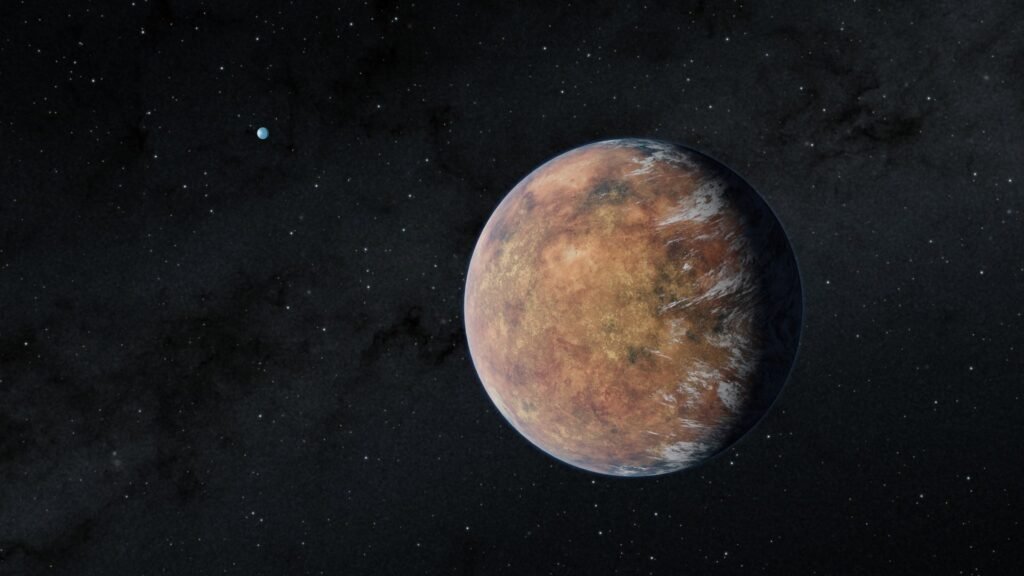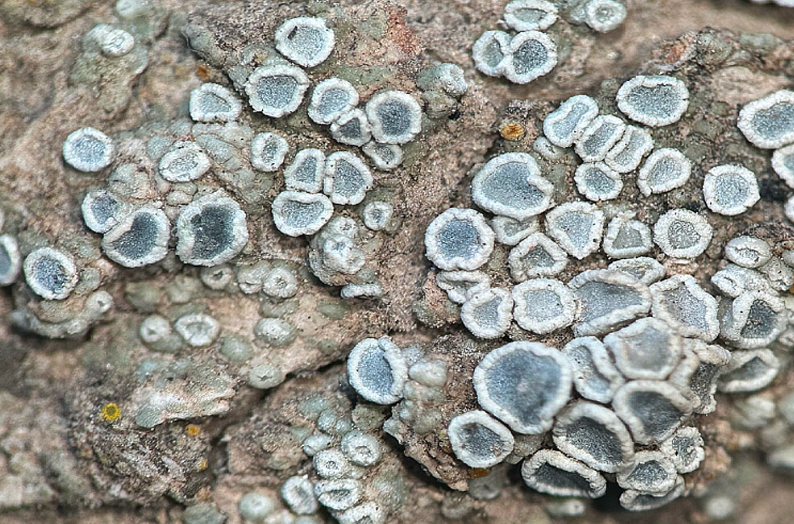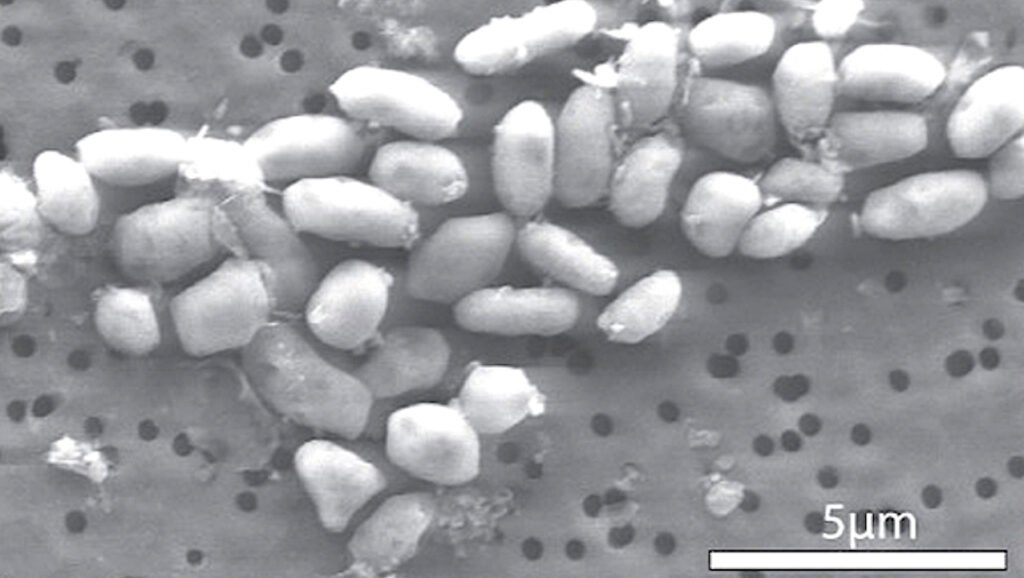Keyboard jockeys with a head full of music and a history of trips to the principal’s office in eighth grade for general smart-assery, present company included, love to come across an odd phrase and declare it a great name for a band.
A couple of University of Colorado botanists have turned that construction on its head. They slid some odd Gunnison-area microbe under a microscope and concluded a band would be a great name for a lichen.
Please welcome to the world of science three newly identified lichen species atop the 20,000-odd varieties previously tagged: Lecanora indigoana, Lepraria saliersiae, and Pertusaria rayana. Realheads in this audience will already have recognized an homage to the Indigo Girls and founders Emily Saliers and Amy Ray.
The peer-reviewed species tags add to the 150-odd lichens uncovered and named by CU Boulder lichenologist Erin Manzitto-Tripp, whose self-named lab overflows with cardboard boxes of samples from her countless journeys up, down, around and over Colorado terrain.
Co-credit on the new Indigo Girls lichens goes to one of Manzitto-Tripp’s Ph.D. botany candidates, Jacob Watts, who is too young to have blissed out at Lilith Fair but enough of a sport to let his mentor’s scratched Indigo Girls CDs play on across Colorado’s rutted high-country roads.
“Jacob has to ride with me in the car a lot because his car’s too dirty, so we take mine,” Manzitto-Tripp said. “So he piles in with me, which also means that he gets to listen to my music.”

Did we mention that right about the moment the scientific journal Phytotaxa — which is a good name for your nephew’s computerized synth-pop band that opened for Kraftwerk — hits the “publish” button on their paper, the Indigo Girls will take the stage at Red Rocks on Friday night?
The Indigo Girls’ decades-long commitment to environmental and social justice causes also put lyrics and music to Manzitto-Tripp’s drive to define and publicize lichens before they disappear. Thousands of lichen species in every climate around the world provide food, shelter and camouflage to other species from microbes to marmots to caribou.
Colorado was thought to have 700 to 800 identified lichens, but Manzitto-Tripp and her students knew there were thousands more undiscovered up canyons and down creeks and across tundra. They have set out to create the first comprehensive directory of Colorado and Southern Rockies lichens, echoing other directories from the Great Smoky Mountains and elsewhere.
What gives the hunting pair of lichenologists lead foot in their long driving trips is the sense they are “200 years behind botanists” in establishing and publicizing their field. Meanwhile, every minute a Colorado developer breaks ground on another strip mall or an off-trail mountain biker unknowingly crushes another ancient microbe.
“There’s no taxonomist in the world, whether you work on birds, bees or polar bears or lichens, that isn’t excited by the prospects of describing new species. It’s a thrill,” Manzitto-Tripp said. “And we have an obligation on this planet to put a name on things that are here and give them a little bit of recognition that they deserve. You can’t protect species, you can’t enact conservation plans, you can’t delimit national parks and all these things until you know what’s there and what’s special about it, right? Every species out in a native ecosystem is functioning some way that’s super critical to that ecosystem. You take out a component of it, things start to fall apart. We take out two or three or four components? Ecosystem collapse.”
Which brings us to the Indigo Girls, of course. A lichen is not a plant, or a moss, or a mushroom, as any life form with half a microbe would tell you. In fact, at next week’s botany convention in Palm Springs, the lichenologists, the mycologists and the bryologists plan a sharpened-pencil rumble straight out of “Anchorman.”
What a lichen is, is an irreplicable symbiosis of algae and fungus, now known to function as ubiquitous factories of “nutrient cycling,” which could be a good name for a band or that gym that just opened down the street from Orange Theory.
Saliers and Ray produce that symbiosis for Indigo Girls, Manzitto-Tripp said.
“I can’t do it justice, to be honest. But it’s poetry in motion,” she said. “It’s poetry that has been sung and written and played by two incredible musicians. It’s actually kind of hard to find musicians that can not only write a song, but play a song and sing a song, and in gorgeous duos and harmonies.”
So when the new Gunnison-area lichen samples turned up in shades of purple and blue under the microscope, the lichenologists decided it was high time to attach the band names they’d been carrying around in their car consoles.
“They’ve inspired a lot of people to try to do a lot of right in this world,” Manzitto-Tripp said. “And that applies to me as well. And so that was the basis for describing these after those ladies, just to sort of say, hey, thanks for all you’ve done for everything in the world to promote ecological awareness and environmental health.”

The researchers’ contributions to science and culture don’t stop there. The dense papers they file to peer-reviewed journals are packed with other potential band names. “Exceptional Biota” is the four-piece brass/punk band your sister’s friends launched in college. “Index Fungorum” plays Bosnian folk songs on handmade string instruments. “Pika Lichen” plays on a Nintendo soundtrack.
CU’s humble, musically inclined lichenologists aren’t even trying to get into the green room to meet the Indigo Girls on Friday night.
“We just want them to hear that these species have been named in their honor, and understand that there are those of us are listening and trying to do our part, to give back like they have in their own way, with their own language,” Manzitto-Tripp said. “So that would be really great to know that they received the news.”
They did.
“We’ve experienced many wonderful things in our career, but having lichen named after us is a unique and awesome thing!” Emily Sailers said, through their tour publicist. “We are honored by this and inspired to know our music resonates with those in the scientific community who are helping us better understand how to responsibly live in and protect our natural world.”
Amy Ray said, “Nature is my favorite thing, so this is as good as it gets for me.”
It’s a development so inspiring that Watts and Manzitto-Tripp had to share their favorite botany dad-joke.
Seems that Freddy the Fungus and Alice the Algae walked into a bar.
And took a lichen to each other.
Type of Story: News
Based on facts, either observed and verified directly by the reporter, or reported and verified from knowledgeable sources.








